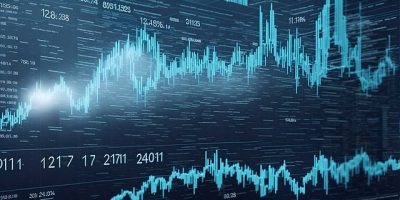These days, large and small businesses alike are gathering increasingly large volumes of data. However, there isn’t much point in collecting huge mountains of information if you have no way of making sense of it. As a result, organisations all over the world are calling out for a system that can make sense of all their information and make it easier to understand. The answer may lie in powerful data visualisation tools.
Using data visualisation tools like Microsoft Power BI, businesses and organisations can identify trends, emerging patterns and outliers in their data sets with maximum efficiency. Data visualisation can also help us grasp what data means by giving it a visual context using simple yet effective maps, charts or graphs.
So what is data visualisation? And why is it important?
What is data visualisation?
Have you ever stared at a data spreadsheet and literally felt your concentration slipping? As the name implies, data visualisation is the visual representation of information. The idea is that by using visual elements such as maps, graphs and charts, data visualisation tools can provide organisations with a more accessible way of seeing, understanding and analysing emerging trends, outliers and patterns in business data.
In our modern world, data visualisation is crucial in helping us grasp a better understanding of data. This is because, as human beings, we are automatically drawn to colours, patterns and shapes. From CEOS and executives to office administrators, employees can quickly identify blue from pink or a square from a triangle. This is further reaffirmed in the ubiquitous nature of visual media in our daily lives – from modern art to advertisements, modern culture is inherently visual.
When we see a chart, graph or map, we are able to quickly understand the trends and outliers and internalise it. As a result, data visualisation tools, technologies and services have become such a crucial part of data analysis. When implemented correctly and to a high standard, data visualisation tools and technologies are essential for analysing massive amounts of information and making data-driven decisions.
How can data visualisation help my business?
Data visualisation services offer a number of different benefits and is a particularly important component of making informed, forward-thinking business decisions as well as the creation of bespoke corporate strategies.
Perhaps most pertinent, data visualisation can assist businesses and organisations in determining the crucial variables that influence customer behaviour, as well as assist in identifying areas within an organisation that may require improvement or additional attention. This could include ensuring data is both accessible and memorable for stakeholders or figuring out the best times and locations to sell a particular service. Data visualisation can also assist in forecasting emerging trends and patterns such as sales volumes and help to boost the productivity and profitability of a business.
Other advantages of data visualisation services include:
- The capacity to swiftly locate and assimilate essential data, which allows businesses to find deeper insights and make more efficient decisions
- Understanding the actions that must be carried out to increase the productivity and efficiency of a business
- Utilising data to hold the attention of your target audience for longer
- The ability to easily share information and insights with as many people as you like, from within and outside your business
The importance of data visualisation
Ever heard the phrase ‘a picture is worth 1000 words’? At the end of the day, visual media is a much more efficient means of communication than spreadsheets. That’s why the ability to visualise data and information has become such a crucial component in the day-to-day operations of industries all over the world, from the education sector to businesses operating within the IT industry. For example, teachers can use data visualisation to show test results for students, track their progress and show areas of improvement. Similarly, computer scientists can also use data visualisation to enhance artificial intelligence (AI) and show what’s working and what isn’t, while high-flying executives can use it to communicate more clearly with stakeholders.
Data visualisation is important for big data projects as well, especially for organisations that need a quick and simple overview of their data. In essence, data visualisation services allow large small and large organisations alike to efficiently comprehend huge swaths of data and information – all with the click of a button.
For similar reasons, data visualisation tools can also be hugely beneficial in advanced analytics. For example, when a data analyst is writing advanced predictive analytics or machine learning (ML) algorithms, data visualisation can assist in showing the predicted output. This is useful for tracking outcomes as well as making sure forecasted models are operating as planned.
Final thoughts
In a nutshell, data visualisation is the process of putting data into a visual framework, like a map or graph, to make it easier to understand and draw conclusions. The main objective of data visualisation is to track patterns and find emerging trends as well as make it easier to spot outliers in enormous huge data sets.
The fundamental concept of data visualisation is that prior to proper analysis, conclusions must be derived from data that has been visually represented. By providing the information with a visual context through maps or graphs, data visualisation tools like Microsoft Power BI allow businesses and organisations to understand what that information actually means which can assist in the implementation of data-driven strategies and campaigns, as well as inform the decision-making process.














Comments